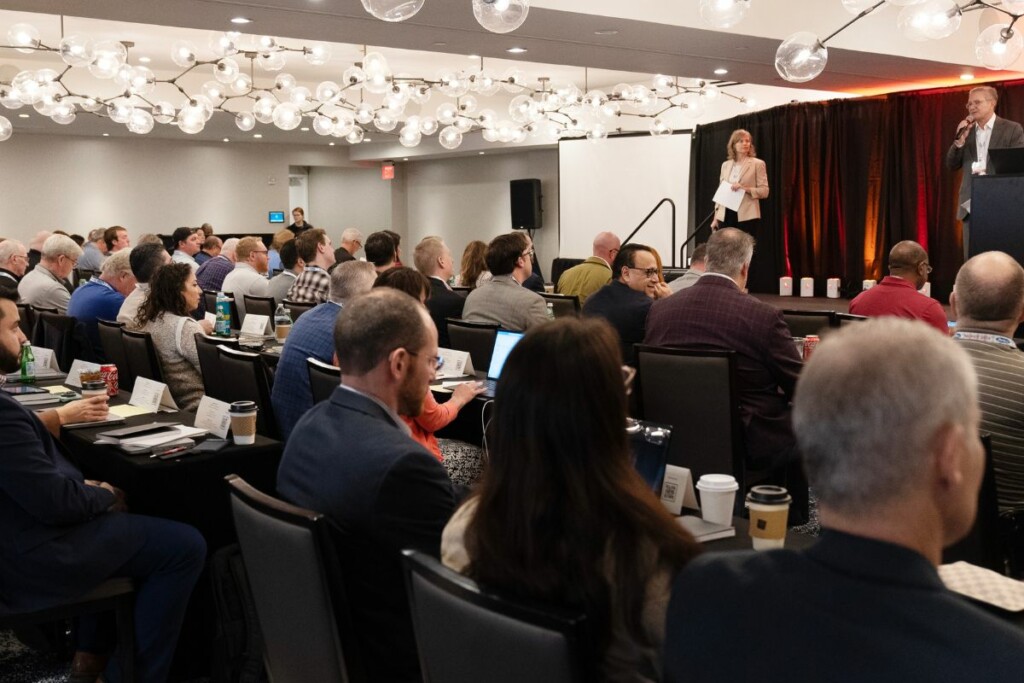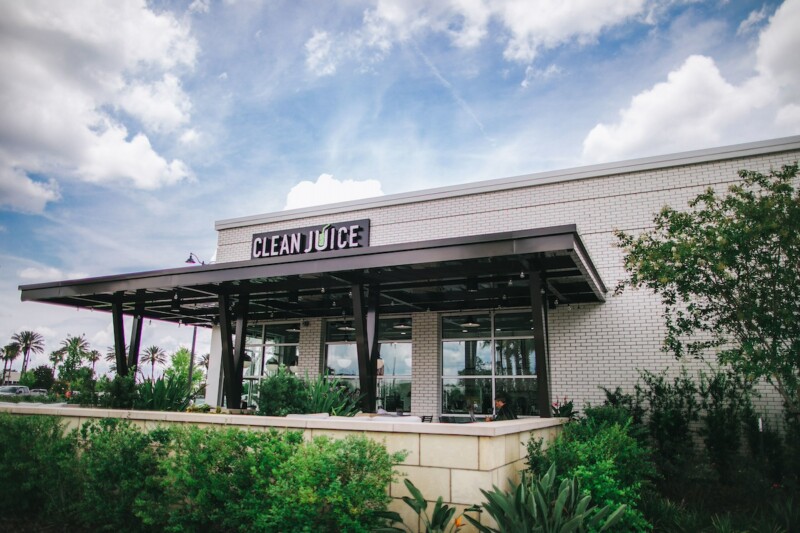9 Takeaways From MUFES 2024
Sessions covered digital menu order design, unit count growth, artificial intelligence and more topics.

Last week’s Multiunit Foodservice Equipment Symposium, hosted by FER, welcomed one of its biggest groups of attendees in recent years. Overall, more than 120 professionals participated in the 13th edition of the event, which took place in Fort Lauderdale, Fla. In all, nearly 60 operators from more than 30 chains and noncommercial facilities attended, along with more than 40 representatives from about 30 manufacturing companies and dealerships, plus a handful of consultants, services agents and association representatives.
MUFES touts plenty of education sessions spread across two days, as well as many networking opportunities. The sessions covered a diverse range of topics, from digital menu order design to unit count growth. Led by top-notch speakers, the sessions delivered solutions to everyday challenges for foodservice equipment and supplies specifiers. Highlights include the following:
A “reality reset” is underway. Setting the tone for 2024, David Henkes at Technomic shared good news: Prices and costs are starting to moderate, aiding in a predicted return to pre-2020 patterns. This year, Technomic expects 5.9% nominal growth for 2% real growth. Trends of beverage-only concepts (like CosMc’s, HTeaO and Swig), AI and digital integrations among QSRs, c-store foodservice innovations, and a blending of business and leisure consumer occasions each earned mentions.
Make sure cooking appliances are under the exhaust hood. This rule “may seem obvious but it’s the one most often broken,” says Richard Young of Frontier Energy. Placing equipment under the exhaust hood with at least a 6-inch overhang on the front and sides will allow it to best capture and contain smoke. Young pointed to the California Energy Wise CKV design guides, which support newbies as well as experienced operators looking to revamp their equipment lineup. Related to CKV, Young recommended operators pay close attention to the pending Cal/OSHA heat illness regulations as, “they’ll be coming to a state near you.”
“Ventless can be an option,” says Tarah Schroeder of Ricca Design Studios. “You just need to think about the exact location—and it’s on a case-by-case basis.” Upfront considerations include one’s aesthetics, local codes and menu; those with raw proteins and bulk cooking needs will be limited, for example, while a poke or sandwich concept could more easily go ventless. Schroeder also reminds that ventless equipment extracts grease but not cooking smells, and increases ambient heat.
Foodservice packaging recovery, from recycling to composting, is a complex subject and there’s no easy button. Natha Dempsey of the Foodservice Packaging Institute took operators on a deep dive into the topic. One piece of advice: “Do your homework when you’re talking about changing your foodservice packaging types,” she says. Your operation’s segment, customer type and region may all factor into what packaging you select. And while researching, watch out for gimmicks. Ask suppliers a lot of questions if something seems too good to be true.
With high volumes of order customization (97%) and digital ordering (77%), Panera Bread has landed on a unique recipe for fulfillment. For one, staff only sees four orders on the kitchen screen, says the brand’s Scott Warrington, to help simplify teamwork. Previously, the screen may have shown 18-20 pages of orders. Further, order accuracy is ensured by a mix of visual, verbal and digital signoffs across various team members. Warrington’s insights came as he talked through the digital revolution alongside Wawa’s Michelle Walsh and WD Partners’ Rob Seely and Joanne Heyob.
Collaboration between operators and manufacturers will help the industry make the best use of AI. In a panel discussion, two operators—Glenn Loughridge of Auburn University and Nadine Rodriguez of Noodles & Co.—shared with two manufacturers—Lee Baker of RATIONAL USA and Nick Patterson of Welbilt—what they’re looking for with technology. Cost savings and labor efficiencies were top priorities.
And AI or not, from a manufacturer’s point of view, Patterson sees robots has a short-term solution until the equipment can do it alone. “We go past robots and think about, what does an automated frying system look like? No one is asking Tesla [to program] robots to drive cars. You expect the automaker to figure out how to drive the cars themselves.”
With due diligence on inspections, second-generation restaurants can dramatically cut opening costs and timelines. Tiffany Vassos of Dave’s Hot Chicken says she’s had second-gen units open in 150 days versus about 14 months for newbuilds, while Don Roberts of Dine Brands Global says second-gen units made up 71% of his company’s development last year. “You still want to deliver the essence and the soul of your brand, but if you can find ways to deliver that in new ways that allow more flexibility for an investment and from the real estate that you go into—that’s how you’re going to win,” he says. Vassos and Roberts were joined by Rodney Taylor of Jersey Mike’s and Adam Jarboe of Chick-fil-A for a panel on efficiently growing unit count. Strong vendor and team communication marked another commonality among brands.
An equipment maintenance action plan needs to include ongoing training. “Increase your training budgets because you’re going to be training all the time,” says Dan Reese of CFESA. High turnover rates in the foodservice industry mean there’s always someone, from the dishwasher to the manager, who needs a lesson. Plus, when it comes to building a planned maintenance program, focus on the equipment that produces 80% of your menu, versus the entire kitchen.
While the Berkeley ban on natural gas was overturned, electrification reach codes are not moot—no matter where you operate. Frontier Energy’s David Zabrowski busted electrification myths and highlighted how operators can ease transitions, including taking advantage of induction loaner programs (check PG&E, SCE, EBCE and SCB). High-efficiency gas equipment also is a cost-effective, carbon-cutting option, he notes. Keep tabs on local policies and incentives at dsireusa.org.
For pictures and videos from last week’s event, visit the MUFES 2024 media gallery. Stay tuned for details on the next MUFES, taking place in 2025.
Thank you to our sponsors
Ali Group: ACP, Beverage-Air, Eloma, Metro, Scotsman Ice Systems and Victory
Amerikooler
Atosa USA
California Foodservice Instant Rebates
Continental Refrigerator
Edward Don & Company
Frontline Int’l.
Welbilt: Frymaster & Merco
Hoshizaki America
Ali Group: Ice-O-Matic
ITW Food Equipment Group
Nemco Food Equipment
Polar Leasing
RATIONAL USA
Specifi LLC
T&S Brass
Thermodyne Foodservice Products
The Wasserstrom Co.
Thank you to NAFEM for underwriting operator attendance.
RELATED CONTENT
- Advertisement -
- Advertisement -
- Advertisement -
TRENDING NOW
- Advertisement -
- Advertisement -
- Advertisement -


